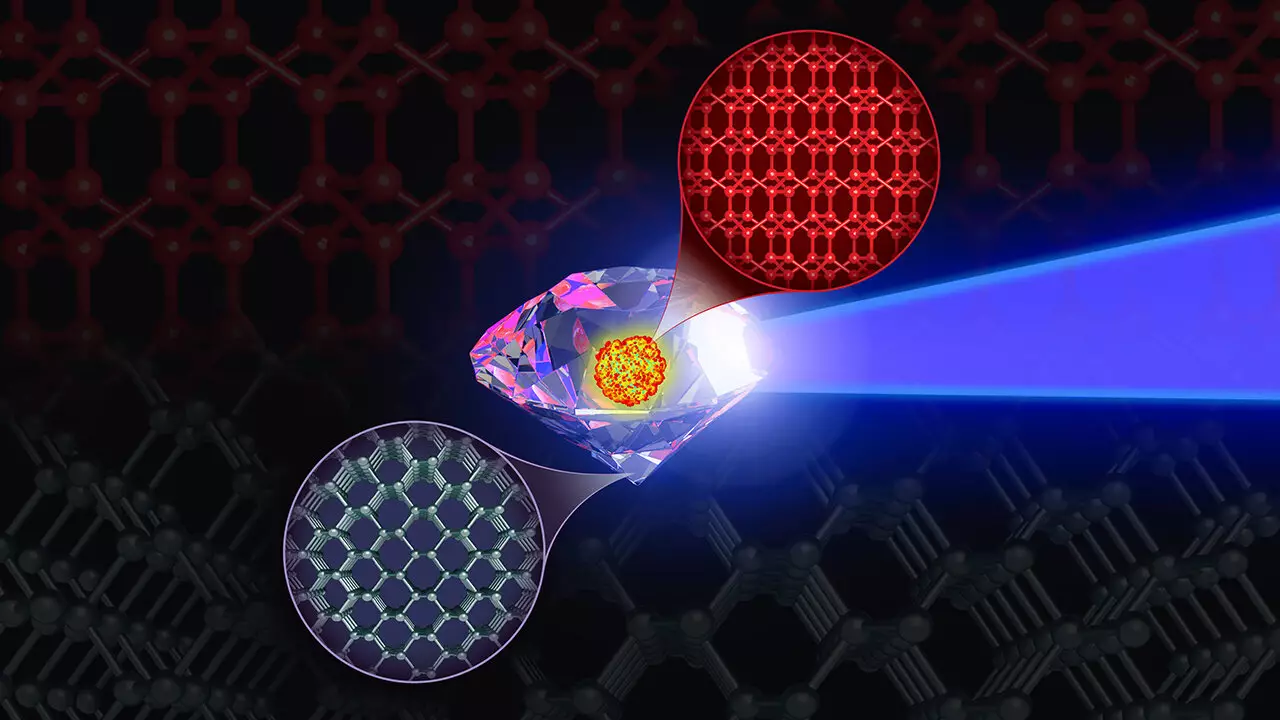Diamond, known as the hardest substance on Earth, may soon have competition. Scientists have predicted that the eight-atom body-centered cubic (BC8) crystal, a form of carbon, could potentially be even tougher than diamond. BC8 is believed to possess a 30% higher resistance to compression than diamond, making it a highly sought-after material. However, the challenge lies in creating this super-tough material under ambient conditions.
The BC8 crystal is theorized to exist in the center of carbon-rich exoplanets, where extreme pressures exceeding 10 million atmospheres are present. Recent astrophysical observations have hinted at the existence of such carbon-rich exoplanets, providing a potential insight into the origins of BC8. The unique properties of BC8 make it a valuable subject of study for scientists aiming to understand the interior structures of these celestial bodies.
While BC8 has been successfully recovered under high-pressure conditions for silicon and germanium, the same has not been achieved for carbon. The challenge lies in stabilizing the BC8 carbon phase at ambient conditions, where its super-hard properties can be effectively utilized. The absence of cleavage planes in the BC8 structure, unlike in diamond, makes it a promising candidate for being tougher than diamond. However, synthesizing this elusive carbon phase has proven to be a daunting task.
Computational Approaches
Through advanced molecular dynamics simulations on high-performance supercomputers like Frontier, scientists have gained insights into the metastability of diamond at extreme pressures. The development of accurate machine-learning interatomic potential has enabled researchers to model the behavior of billions of carbon atoms under extreme conditions accurately. These simulations have highlighted the narrow high-pressure, high-temperature region where the BC8 phase of carbon may be accessible, shedding light on the challenges faced in previous experimental efforts.
Implications and Future Research
Understanding the properties and synthesis pathways of the BC8 carbon phase is crucial for unlocking its full potential as a super-diamond material. Collaborative efforts involving researchers like Ivan Oleynik, Jon Eggert, and Marius Millot are focused on exploring experimental pathways to synthesize and observe the BC8 phase in laboratory settings. The ultimate goal is to grow a BC8 super-diamond that could revolutionize the field of materials science with its unparalleled toughness and strength.
The quest for the BC8 carbon phase represents a significant scientific endeavor to unlock the secrets of this elusive material. By leveraging cutting-edge computational tools and experimental techniques, researchers are inching closer to realizing the dream of creating a super-diamond tougher than diamond itself. The potential applications of BC8 extend beyond earthly boundaries, offering insights into the unique structural forms of carbon present in distant exoplanets. As scientific knowledge and technological capabilities continue to advance, the quest for the BC8 super-diamond remains an intriguing and challenging pursuit in the realm of materials science.


Leave a Reply